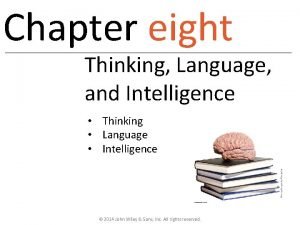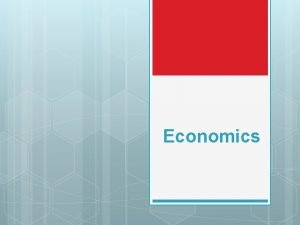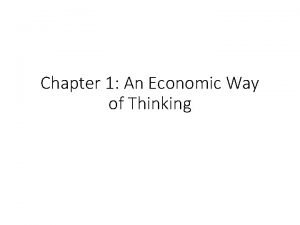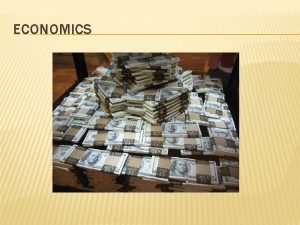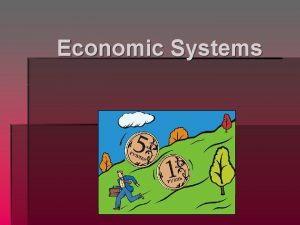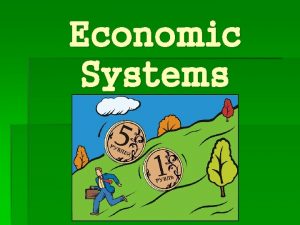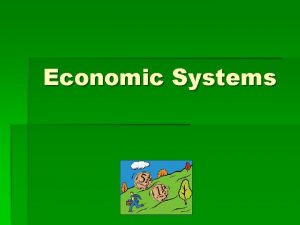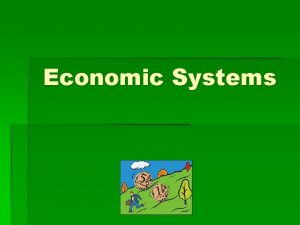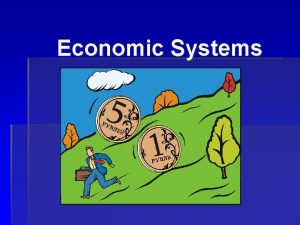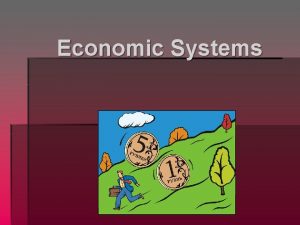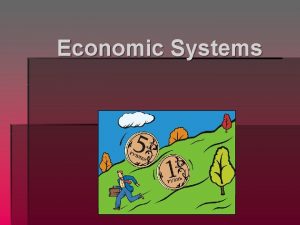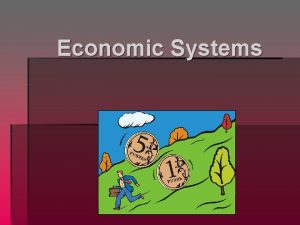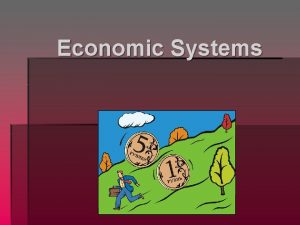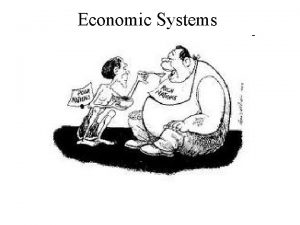Economic Systems Economic System The way people produce















- Slides: 15

Economic Systems

Economic System The way people produce and exchange goods and services

The Four Types of Economic Systems • Four very different types of Economic Systems have evolved as different societies have placed different emphasis on different goals and priorities in their efforts to answer the Three Key Economic Question.

Traditional Economy • Family or Community based Economic System that relies on custom and ritual to make its choices. • Examples: – Aborigines – Amazon Tribes – Any Subsistance Economy

Market Economy • Individual or Consumer based Economic System that relies on the consumption choices of consumers. • Examples: – *The U. S. A. ? – *Japan? – Any Capitalist Economy?

Command Economy • Centrally Controlled Economy where the Government makes all decisions. • Examples: – Cuba – China? – Any Communist Country or Dictatorship

Socialist (Mixed) Economy • Economic System that incorporates some Governmental involvement into a Market Based Economy. • Examples: – *The U. S. A. ? – *Japan? – *China? – Most “Modern” Economies

Types of Economic Systems Free Market Socialist Command Traditional

Types of Economic Systems Free Market People freely produce and buy what they want Prices are set buy Supply and Demand Producers invest their money to make a Profit Little Government interference Free Enterprise, Capitalism Market Economy Socialist Command Traditional

Types of Economic Systems Free Market People freely produce and buy what they want Prices are set buy Supply and Demand Producers invest their money to make a Profit Little Government interference Free Enterprise, Capitalism Market Economy Socialist Command Government makes all economic decisions Workers are supposed to share equally No private property Traditional

Types of Economic Systems Free Market Socialist People freely produce and buy what they want Government owns some basic industries Prices are set buy Supply and Demand Producers invest their money to make a Profit Little Government interference Free Enterprise, Capitalism Market Economy Government provides free or low-cost public services: school, health care, etc. Command Government makes all economic decisions Workers are supposed to share equally No private property Traditional

Types of Economic Systems Free Market Socialist People freely produce and buy what they want Government owns some basic industries Prices are set buy Supply and Demand Producers invest their money to make a Profit Little Government interference Free Enterprise, Capitalism Market Economy Government provides free or low-cost public services: school, health care, etc. Command Government makes all economic decisions Workers are supposed to share equally No private property Traditional People work to meet their basic needs Subsistence Agriculture: Farmers grow enough to feed their families Cottage Industry: Goods are produced in private homes by hand

Economic Activities Primary – Gathering raw materials Secondary – Adding value to materials by changing their form. Tertiary – Business or professional services Quaternary – Providing information, management or research services

Natural Resources Renewable – Can be replaced by natural processes Examples: trees, seafood, Non-renewable – Cannot be replaced once used Examples: coal, petrolium, natural gas Inexhaustable – Unlimited supply Examples: sunlight, wind, geothermal heat

 Lesson 2 our economic choices
Lesson 2 our economic choices 1. the ability to produce valued outcomes in a novel way
1. the ability to produce valued outcomes in a novel way Frequency trig
Frequency trig Two way anova
Two way anova One way and two way threaded binary tree
One way and two way threaded binary tree Perbedaan two way anova dan one way anova
Perbedaan two way anova dan one way anova Anova test
Anova test One way anova vs two way anova
One way anova vs two way anova Uji two way anova
Uji two way anova Conventional software
Conventional software When i was one i had just begun the day i went to sea
When i was one i had just begun the day i went to sea Talk this way
Talk this way The way the economic units are organized
The way the economic units are organized An economic way of thinking
An economic way of thinking Conversation is like ping pong
Conversation is like ping pong Hát kết hợp bộ gõ cơ thể
Hát kết hợp bộ gõ cơ thể

